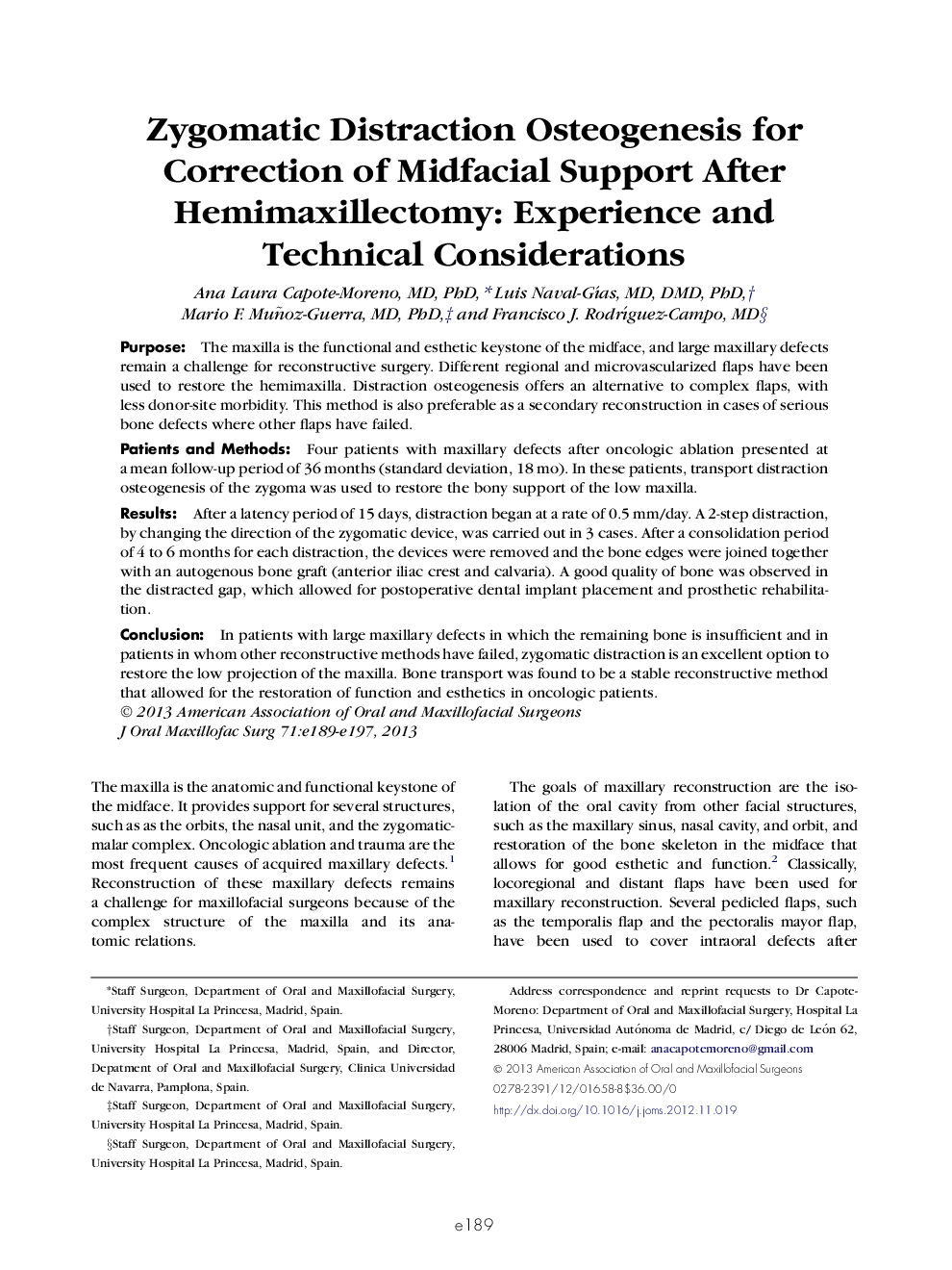| Article ID | Journal | Published Year | Pages | File Type |
|---|---|---|---|---|
| 3156588 | Journal of Oral and Maxillofacial Surgery | 2013 | 9 Pages |
PurposeThe maxilla is the functional and esthetic keystone of the midface, and large maxillary defects remain a challenge for reconstructive surgery. Different regional and microvascularized flaps have been used to restore the hemimaxilla. Distraction osteogenesis offers an alternative to complex flaps, with less donor-site morbidity. This method is also preferable as a secondary reconstruction in cases of serious bone defects where other flaps have failed.Patients and MethodsFour patients with maxillary defects after oncologic ablation presented at a mean follow-up period of 36 months (standard deviation, 18 mo). In these patients, transport distraction osteogenesis of the zygoma was used to restore the bony support of the low maxilla.ResultsAfter a latency period of 15 days, distraction began at a rate of 0.5 mm/day. A 2-step distraction, by changing the direction of the zygomatic device, was carried out in 3 cases. After a consolidation period of 4 to 6 months for each distraction, the devices were removed and the bone edges were joined together with an autogenous bone graft (anterior iliac crest and calvaria). A good quality of bone was observed in the distracted gap, which allowed for postoperative dental implant placement and prosthetic rehabilitation.ConclusionIn patients with large maxillary defects in which the remaining bone is insufficient and in patients in whom other reconstructive methods have failed, zygomatic distraction is an excellent option to restore the low projection of the maxilla. Bone transport was found to be a stable reconstructive method that allowed for the restoration of function and esthetics in oncologic patients.
